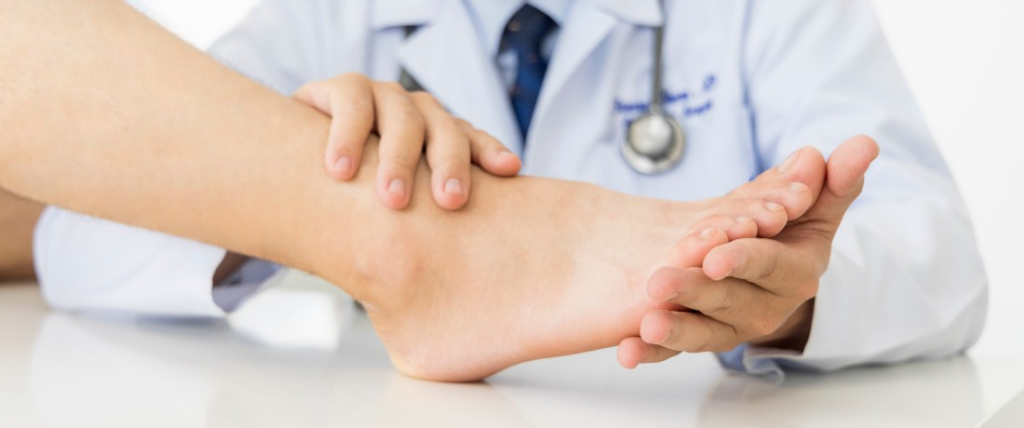
Ingrown toenails are a common but frustrating foot problem. If you’ve ever had one, you know the pain, swelling, and discomfort it brings. An ingrown toenail happens when the edge of your toenail grows into the skin, instead of sitting neatly on top of it. While some severe cases may need surgery, many people can manage and even heal ingrown toenails at home without surgical procedures.
The good news? There are safe and effective treatment options for ingrown toenails without surgery. In this article, we’ll walk through what causes them, gentle remedies, medical treatments that don’t involve cutting, and preventive steps to keep them from coming back.
What Causes Ingrown Toenails?
Before diving into the treatments, it helps to understand why toenails sometimes grow the wrong way. The main causes include:
- Improper nail trimming – Cutting nails too short or rounding the edges can cause them to dig into the skin.
- Tight shoes or socks – Footwear that squeezes the toes puts pressure on nails, encouraging them to curve inward.
- Injury – Stubbing your toe or dropping something heavy on it can change the way the nail grows.
- Genetics – Some people naturally have curved nails that are more likely to become ingrown.
- Poor foot hygiene – Moist, sweaty feet can soften the skin around the nails, making it easier for the nail edge to penetrate.
Knowing the cause can help you choose the best treatment option and prevent future issues.
Non-Surgical Treatment Options
If your ingrown toenail isn’t severely infected, there are many effective treatments that don’t involve surgery. Here’s a breakdown of safe methods you can try:
1. Warm Water Soaks
One of the simplest and most soothing treatments is soaking your foot in warm water. Adding Epsom salt can help reduce swelling and soften the skin around the nail. Soak your foot for 15–20 minutes, two to three times daily. This helps relieve pain and makes it easier to gently lift the nail away from the skin.
2. Cotton or Dental Floss Technique
After soaking, you can gently lift the edge of the nail and place a tiny piece of clean cotton or dental floss underneath. This helps train the nail to grow above the skin rather than into it. Change the cotton daily to avoid bacteria buildup.
3. Over-the-Counter Pain Relief
Non-prescription pain relievers like ibuprofen or acetaminophen can help reduce discomfort and swelling while the nail heals.
4. Antibacterial Ointments
Applying an antibiotic cream or ointment to the affected area can help prevent infection. Cover it with a bandage to keep the area clean and protected from dirt or sweat.
5. Proper Footwear
Wearing roomy, breathable shoes or sandals can give your toes space to heal. Avoid tight or pointy shoes that press against the toenails.
6. Toe Bracing (Nail Splints)
In some clinics, podiatrists use small braces or splints that attach to the nail and gently lift it away from the skin. This non-invasive method corrects nail growth over time without needing surgery.
7. Taping Method
Some doctors recommend using medical tape to gently pull the skin away from the nail edge. This creates space for the nail to grow normally and reduces pressure.
When to See a Doctor (Without Surgery)
Sometimes, self-care isn’t enough, especially if your toenail is severely inflamed or keeps recurring. A podiatrist may offer non-surgical treatments such as:
- Topical or oral antibiotics – If an infection is present.
- Professional nail lifting – A podiatrist can safely lift the nail edge and place a splint.
- Chemical treatments – Some doctors use chemical solutions to thin or soften thick nails so they grow correctly.
Prevention Tips
Treating an ingrown toenail is helpful, but preventing future ones is even better. Here are simple prevention habits:
- Trim nails correctly: Cut them straight across, not rounded. Leave them slightly longer rather than too short.
- Wear comfortable shoes: Choose footwear with enough toe room.
- Keep feet clean and dry: Wash daily and change socks if they become sweaty.
- Protect your feet: Avoid injuries by being cautious with heavy objects or sports.
- Check regularly: If you’re prone to ingrown nails, inspect your toes often to catch problems early.
Final Thoughts
Ingrown toenails can be painful, but surgery isn’t always the answer. Many people find relief with home remedies, lifestyle adjustments, and non-surgical medical treatments. By practicing good nail care and wearing proper footwear, you can heal your current ingrown toenail and reduce the risk of future ones.
If pain worsens, or if you have conditions like diabetes or poor circulation, it’s best to see a doctor right away. Early care can prevent complications and keep your feet healthy.
FAQs About Treating Ingrown Toenails Without Surgery
1. Can I fix an ingrown toenail at home?
Yes, many mild cases can be treated at home with warm soaks, cotton under the nail, and proper nail care. However, if there’s severe pain, pus, or spreading redness, seek medical help.
2. How long does it take for an ingrown toenail to heal without surgery?
Mild cases usually improve within a few days to two weeks with consistent home care. Chronic or severe cases may take longer and require professional treatment.
3. Is it safe to cut out the ingrown part myself?
It’s not recommended to dig into the nail on your own. This can worsen the problem or cause infection. Instead, use gentle methods like lifting the nail with cotton or floss.
4. Can children get ingrown toenails?
Yes, children and teenagers are prone to them, especially if they wear tight shoes or trim their nails incorrectly. Non-surgical treatments work well in most pediatric cases.
5. How can I prevent ingrown toenails from coming back?
The best prevention is trimming nails straight across, avoiding overly tight shoes, and keeping feet clean and dry. Regular foot checks can also help you catch issues early.

